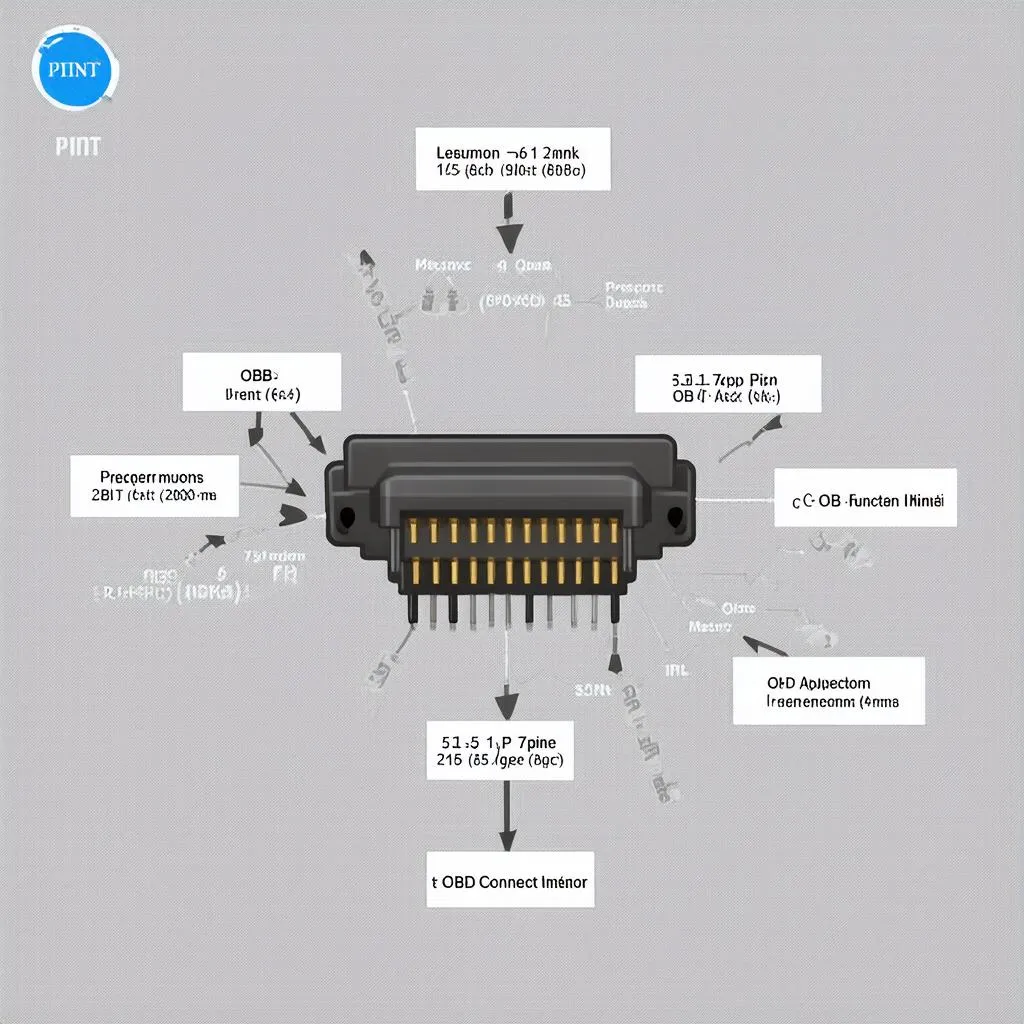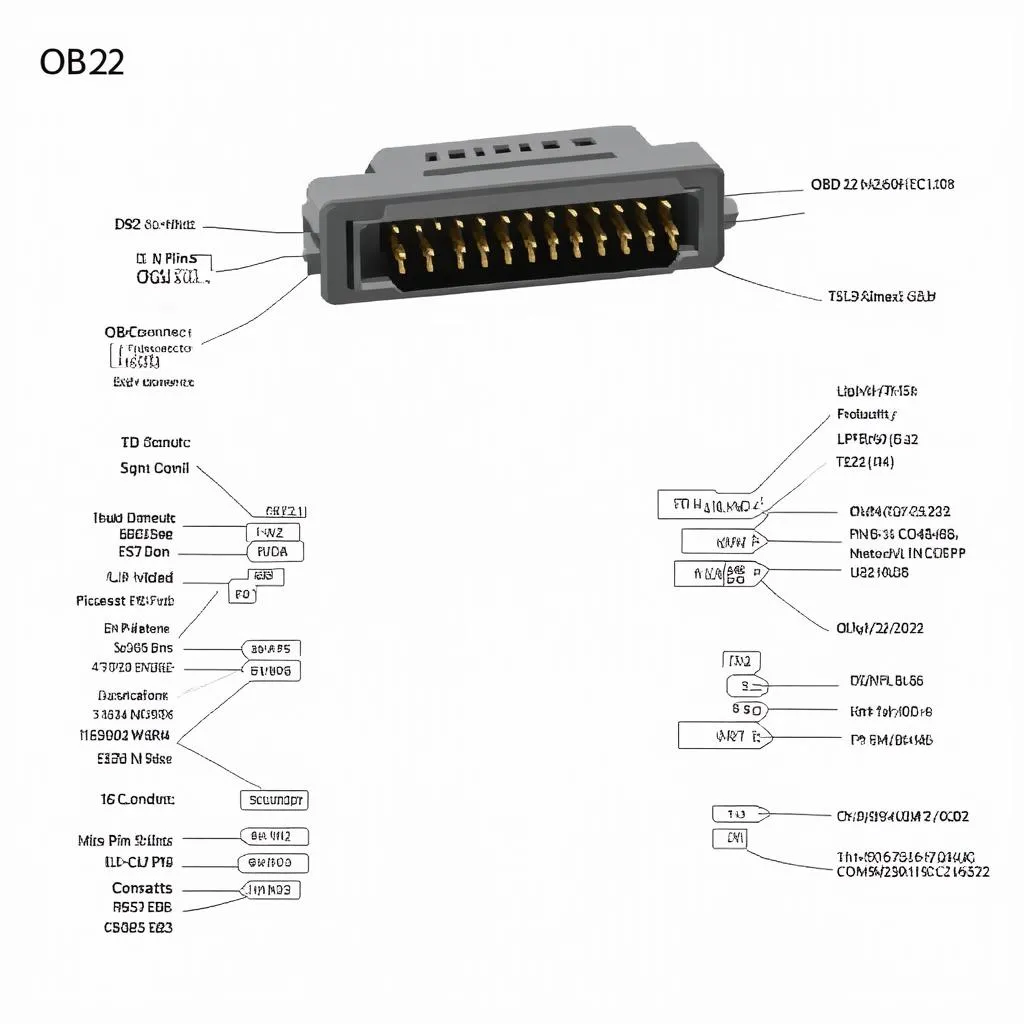Have you ever wondered what the difference is between OBD and OBD2 connectors? It’s a common question among car owners, especially those who are interested in understanding how their vehicles work. You may be thinking, “I need to get my car fixed, and the mechanic mentioned something about the OBD port. What is that? Is that the same thing as the OBD2 port?” It’s easy to get confused, and with so much conflicting information online, it can be hard to know where to start.
Understanding the Importance of OBD and OBD2
The term OBD (On-Board Diagnostics) is used to refer to a vehicle’s self-diagnostic system. It’s essentially a computer that monitors various engine functions, such as fuel efficiency, emissions, and engine performance. OBD systems have become increasingly sophisticated over the years, leading to the development of the OBD2 standard in 1996.
What is the Difference?
The OBD Standard
The OBD standard was first introduced in 1988 in the United States, with the goal of reducing vehicle emissions. Early OBD systems were relatively simple and could only detect a limited number of problems.
The OBD2 Standard
The OBD2 standard, on the other hand, provides a more comprehensive diagnostic system. It’s a standardized protocol that allows mechanics and car owners to access and interpret data from a vehicle’s engine control unit (ECU). OBD2 systems are also more versatile and can diagnose a wider range of problems.
Key Differences Between OBD and OBD2:
-
Compatibility: OBD2 is compatible with all vehicles manufactured in the United States after 1996. OBD is only compatible with vehicles manufactured between 1988 and 1995.
-
Connectors: OBD connectors have a 16-pin configuration, while OBD2 connectors have a 16-pin configuration as well. Although the number of pins is the same, the position and function of some of the pins differ between the two standards.
 OBD connector pin layout
OBD connector pin layout  OBD2 connector pin layout
OBD2 connector pin layout -
Data Access: OBD2 provides more comprehensive data access than OBD, allowing you to retrieve information about a wider range of engine parameters.
-
Diagnostic Codes: OBD2 uses standardized diagnostic trouble codes (DTCs) that are universally recognized by mechanics. This makes it easier to diagnose and repair vehicles.
-
Scanners: OBD2 scanners are designed to work with all OBD2-compliant vehicles, whereas OBD scanners are only compatible with vehicles manufactured between 1988 and 1995.
What About Older Vehicles?
Even though OBD2 became the standard in 1996, there are still a lot of older vehicles that use OBD systems. If you’re working on an older vehicle, you’ll need to use a dedicated OBD scanner.
How to Find the OBD Connector
OBD2 connectors are typically located under the dashboard, near the steering column. You can also check the owner’s manual for the exact location. It’s a 16-pin connector, usually rectangular in shape.
Why is this Important?
So why is understanding the Difference Between Obd And Obd2 Connectors important?
- Troubleshooting: If you’re having issues with your vehicle, a scan tool can help you diagnose the problem.
- Performance Monitoring: OBD2 scanners can be used to monitor your vehicle’s performance. This can help you track your fuel economy, emissions, and other important metrics.
- Emissions Testing: In many states, you’re required to have your vehicle inspected for emissions. OBD2 scanners are often used to perform these tests.
Frequently Asked Questions:
- What is the best OBD2 scanner for DIY enthusiasts? There are many great OBD2 scanners on the market. Some popular options include the Autel MaxiCOM MK808 and the ANCEL BA301.
- What are some common OBD2 codes? Some common OBD2 codes include P0171 (System Too Lean), P0300 (Multiple Cylinder Misfire), and P0420 (Catalyst System Efficiency Below Threshold).
- Can I use an OBD2 scanner on a European car? OBD2 is a global standard, so you can use an OBD2 scanner on a European car. However, some European car manufacturers have proprietary protocols that may require a specialized scanner.
- Can I reset my car’s check engine light myself? You can usually reset the check engine light yourself using an OBD2 scanner. However, it’s important to note that resetting the check engine light doesn’t solve the underlying problem. You’ll need to diagnose the issue and repair it.
Additional Resources:
Ready to Learn More?
If you’d like to learn more about the OBD system, we encourage you to check out our website for more detailed information and articles.
Need Help?
Have questions about OBD, OBD2, or your vehicle’s diagnostic system? Our team of experts is here to help. Contact us via WhatsApp at +84767531508 for personalized advice and support 24/7.